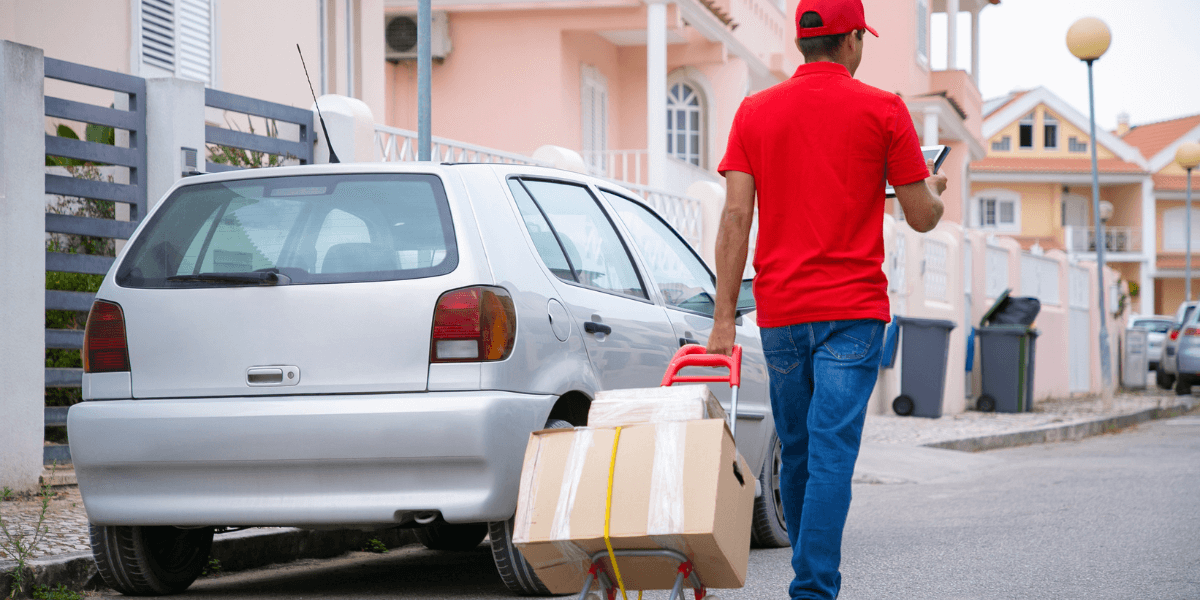When it comes to moving, one of the most common questions is: “How many moving boxes do I need?” It’s not a one-size-fits-all answer. The number of boxes depends on many factors, and guessing wrong can be stressful; either you’ll run out of boxes mid-pack or end up wasting money on extras.
An average household typically requires between 60 and 150 boxes for a move, depending on the size of the home. But with careful planning, you don’t need to rely on guesswork. An online moving box calculator can be helpful, but it’s also beneficial to understand what’s being calculated and why.
This blog explains how to calculate the number of packing boxes needed for a move, providing a clear estimate for your packing box requirements.
Factors That Affect How Many Boxes You’ll Need
There are several things to think about before estimating the number of moving boxes you’ll need. These include:
- Square Footage: The more space you live in, the more stuff you probably have. A 500 sq. ft. studio won’t need the same number of boxes as a 2,500 sq. ft. home.
- Number of Rooms: Instead of focusing only on square feet, count how many rooms you’ll be packing.
- Inhabitants: A single person usually has fewer belongings than a family of four. Children often have toys, clothes, and school items that need extra boxes.
- Lifestyle: Minimalists may only need a few boxes, while collectors or individuals who love shopping may require twice as many. Be honest about your lifestyle when estimating your needs.
- Time Spent at Home: People who work from home tend to have more home office items, books, or tech equipment.
Taking all of these factors into account helps you create a realistic packing box estimate for a house move and avoids surprises later on.
Condition of Boxes
Before starting, make sure all boxes are in good condition. Reusing boxes is smart and eco-friendly, but they need to be:
- Strong: Boxes should be able to hold their shape when lifted. Weak boxes can collapse under weight and damage your belongings.
- Clean: Boxes used for food or storage should be inspected for stains or signs of pests. Clean boxes keep your items hygienic and safe.
- Dry: Moisture weakens cardboard. Always use dry boxes to protect your items, especially electronics, books, or clothing.
Buying from reliable stores is a safer option, especially for valuable or fragile items. Many people choose to buy moving boxes from Tawheed Pickup Rental for peace of mind, knowing they’re getting durable boxes designed specifically for moving.
Packing Essentials
Start by Packing One Room at a Time
It’s tempting to start packing everything at once, but it’s more effective to pack one room at a time. Start with rooms you use the least, such as guest rooms or storage sites, then move on to kitchens and bedrooms. Pack things you won’t need in the weeks before your move. You’ll quickly see if your packing box estimate for the house move was right or needs adjustment.
This approach also helps you track box counts better, especially if you’re using a moving box calculator online to log your progress.
Don’t Forget Knick-Knacks and Storage Items
Smaller items, such as souvenirs, decorations, and collectibles, may seem insignificant, but they add up quickly. Each room has its hidden stash of small items.
A good rule of thumb is to pack similar items together and use appropriately sized boxes, keeping track of them all in your packing box estimate for the house move checklist.
Pack an Essentials Bag
Before moving day, pack a small bag with things you’ll need immediately. This might include:
- A change of clothes
- Basic toiletries
- Chargers
- Snacks
- Medicine
- Important documents
This bag should stay with you and not be packed in boxes. It saves time on arrival day and prevents you from having to dig through dozens of boxes for your toothbrush.
Moving Boxes
Not all boxes are the same. They come in various sizes:
- Small Boxes (1.5 cu ft.): Ideal for books, DVDs, and canned goods.
- Medium Boxes (1.5 – 3 cu ft.): Great for kitchen tools, clothes, and small appliances.
- Large Boxes (2.5 – 3.5 cu ft.): Used for linens, pillows, and larger toys.
- Extra-Large Boxes (3.6+ cu ft.): Ideal for bulky yet lightweight items, such as comforters or lampshades.
- Wardrobe Boxes (11–16 cu ft.): These boxes come with a hanging bar, perfect for storing clothes on hangers.
- Dish Barrel Boxes: Thick boxes are designed for fragile kitchen things, such as dishes and glasses.
- Telescopic Boxes: Adjustable length, useful for mirrors, framed pictures, and artwork.
Using the right box type helps reduce waste and damage. If you’re short on space, consider a rental pickup truck from Tawheed Pickup Rental for smaller moves to avoid using large trucks unnecessarily.
Tape Everything to Secure
Use packing tape to seal boxes securely. It’s smart to reinforce the bottom and top seams, especially for heavy items. A tape dispenser can make the process quick and prevent mess. Avoid using duct tape or masking tape; they don’t adhere well to cardboard and may peel off during transit.
Labels and Markers
Labeling is key to staying organized. Use permanent markers to write key identifiers. Color-coded labels or tape can help sort boxes by room at your new home, making unpacking much easier.
Packing Up the Right Way
Don’t overfill or underfill boxes. Boxes should be full enough not to collapse but not so full they burst. Heavy items are packed in small boxes, while light items are packed in larger boxes.
Keep a count of how many boxes you’ve used for each room. This provides a real-time method for calculating packing boxes for moving, eliminating the need for guesswork.
Final Thoughts
Getting the box count right makes your move smoother and more efficient. Start by estimating based on your home’s size, then adjust as needed. By understanding your space, belongings, and packing needs, you can confidently prepare your packing box estimate for a house move.
Don’t forget the importance of good supplies, strong boxes, proper wrapping materials, labels, and even tools like a pickup truck if you’re doing it yourself. And if you’re unsure where to get quality supplies, it’s always a safe choice to buy boxes from trusted moving supply stores.






